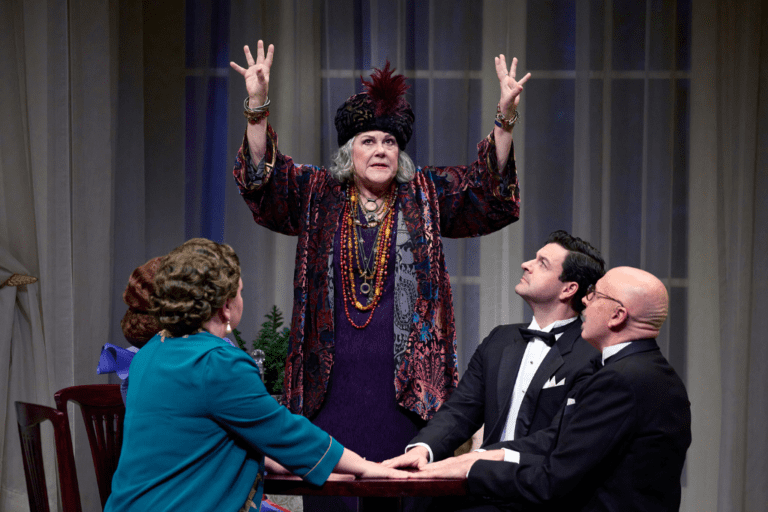Inside the Triumph of the 2021 Toronto Fringe
There’s a crackle in the connection, a hopeful pause, a quiet laugh as the call comes to life.
Toronto Fringe’s Executive Director, Lucy Eveleigh, appears on my screen.
“Hi!”
And so we begin.
Over a year into the pandemic, this is still how we’re doing things, and it still, admittedly, feels strange. I’m in my bedroom in downtown Ottawa, and Eveleigh’s in the UK— she has been for months.
Yet here we are, me writing an article about the Toronto Fringe, and Eveleigh executive-directing it from a separate continent.
“It’s been a fascinating time,” says Eveleigh.
“In the beginning it was quite traumatic, of course. But it’s been a fascinating time. We’re always learning, always wanting to do better.”
The Toronto Fringe, like countless Fringes all over the world, is entering its second all-online festival this year. It’s a process that, for Eveleigh, has demanded careful planning, a strong community, and a kick-ass administrative team.
“It’s been busier this year. We’re the sort of team that doesn’t want to do nothing. We want to do things, fill the space up with other stuff.”
Many know the Toronto Fringe solely as a producer of festivals—the Fringe itself, of course, a fixture of Toronto summers, but the mid-winter Next Stage festival, too. Eveleigh and her team have spent the pandemic interrogating how Toronto Fringe can be more, though: more than a festival, more than a brand.
“We’re interested in what we can offer as a platform beyond the festival. The festival’s given us an opportunity to look at the bigger picture of what this organization is capable of offering to its community, of course. But we’re curious where we go from here—we’re a platform, and we’re a support, so what does that mean other than just being a festival?”
It’s a big question: how best can a Fringe serve its community? Eveleigh and her team embarked on the task of addressing this conundrum with a progressive new initiative for the 2021 Fringe: 50% of lottery slots for the festival were reserved for creators from BIPOC communities.
“Making the lottery 50% BIPOC spots felt obvious,” says Eveleigh bluntly. “It’s a Fringe—there’s a lot of freedom there. You can make and implement those sorts of changes almost immediately. There’s accountability, but there’s less bureaucracy.”
This initiative was, of course, only a starting point, Eveleigh points out. “There’s still a lot to do. We want to have a lasting positive impact, and that comes when we look at how best we can offer our platform to the community of artists.”
Eveleigh’s excitement for this year’s Fringe is contagious—it’s especially charming when she tells me about this year’s online program as an example of “elevating the digital experience,” in her words.
“It feels like a Fringe program!,” she exclaims. “Each show has its own page, and they can do their own promotion. It really feels like a Fringe program.” (You can check it out here; it does.)
“We have a virtual patio, too, that looks really cool. I’m hoping people will take the chance to socialize.”
All in all, the pandemic’s not been all bad for the Toronto Fringe, and Eveleigh’s eager to witness the implications of a digital Fringe in action.
“There’s so much people never would have had the chance to see were it not for this digital platform. This is an opportunity for artists to showcase their work and for people to see it from the comfort of their own home, wherever that home may be.”
I thank Eveleigh for her time, acknowledging the oddness of our roles from our respective cities, and wish her well.
My interview with Jason Murray, Chair of the Board of Directors, echoes much of my discussion with Eveleigh in terms of content, and is no less pleasant. Murray is equally enthralled with the work the Toronto Fringe staff and artists have managed to produce over the last year.
“The staff did a phenomenal job being inventive and leveraging video and digital media for a whole festival,” says Murray with a smile.
“Last year was a year of exploration. Everyone had to pivot immediately…they had to kick into high gear. This year, there’s a more sharply defined sense of how things work. We’re able to elevate the way in which we’re rolling out this year’s digital Fringe.”

Murray’s excited for the future of the arts in Toronto, particularly with the Toronto Fringe in a unique position to help revive it.
“My focus is that we come back, and come back even stronger given what we’ve explored over the last year,” says Murray.
“I know it is, in many ways, devastating to see what has happened to the arts. Now we must use our talents and our strengths to scale performance to new heights.”
Proof of that strength lies in this year’s digital Fringe, a Fringe that responds to the diversity of Toronto (and the rest of the world!).
“We’re thinking about the whole world this year, not just Toronto. We’re ensuring the world is being paid attention to, whether it be here at home or populations in India, in China, in Africa, taking into account stories from these communities as well. We’re thinking about the fact that we can get artists in front of people located in different time zones, proliferating the Fringe to audiences beyond Toronto,” explains Murray.
“There’s always work to be done, of course. But I’m really looking forward to seeing how artists have channelled their energies into making art digitally this year.”
“We’re coming back. We’re coming back stronger.”
And we are.
Just a year ago, Hayley Malouin, my predecessor at Intermission, wrote a similar article to this one for last year’s Fringe, a feature piece that, understandably, opened with an ominous “Fringe is dead; long live the Fringe.”
This year, nothing could be further from the truth.
For more information on the Toronto Fringe, you can visit their website here.















Comments